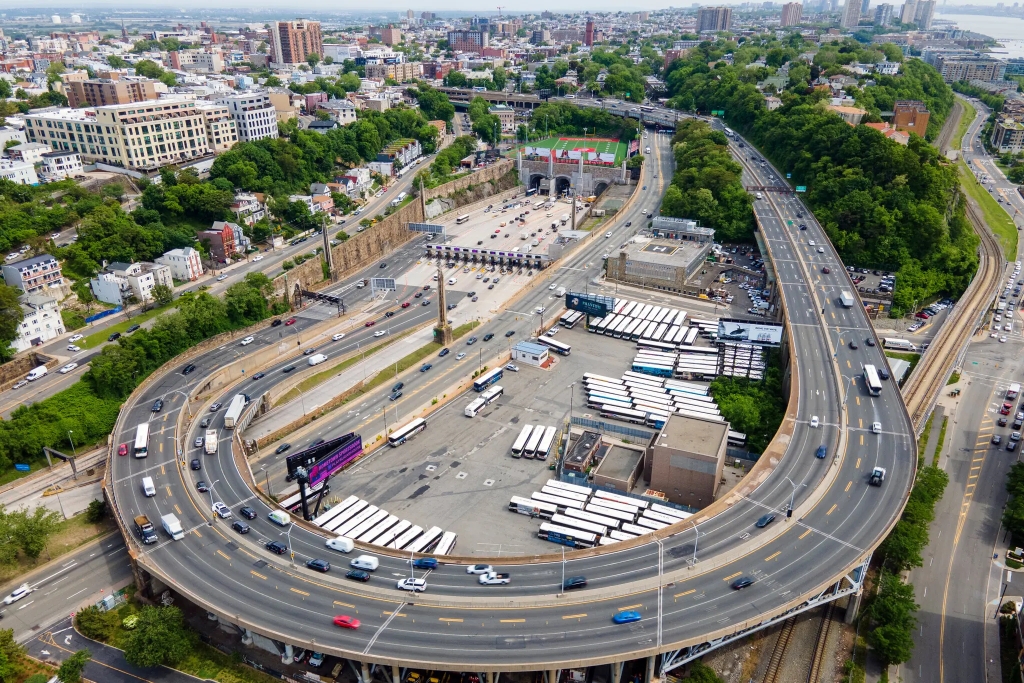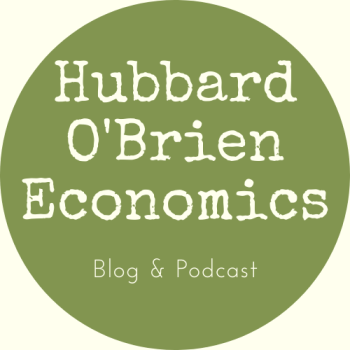Supports: Microeconomics and Economics, Chapter 12, and Essentials of Economics, Chapter 9.

The entrance to the Lincoln Tunnel, which connects New Jersey to Midtown Manhattan. (Photo from the Associated Press via the New York Times.)
This spring, New York City will begin charging an additional fee—referred to as a congestion price or congestion toll—on vehicles entering the borough of Manhattan below 60th Street. The purpose of the fee is to reduce the congestion and pollution that additional vehicles cause when driving in that part of the city. (Note that the fee can be thought of as Pigovian tax because it is intended to address a negative externality caused by driving a vehicle. We discuss Pigovian taxes in Microeconomics and Economics, Chapter 5, Section 5.3, and in Essentials of Economics, Chapter 4, Section 4.5.)
Trans-Bridge Lines operates buses between the Lehigh Valley in Pennsylvania and Manhattan. The firm will have to pay a fee of $24 each time one of its buses enters Manhattan. An article in the (Allentown, PA) Morning Call quotes the president of Trans-Bridge Lines as objecting to the fee: “It doesn’t make sense and punishes bus operators who are part of the solution to the congestion problem.” However, the article also notes that “Trans-Bridge is not considering fare increases at this time.”
If Trans-Bridge’s cost of providing bus service between the Lehigh Valley and Manhattan increases by $24 per bus, shouldn’t the firm raise the price it charges passengers? Does the failure of Trans-Bride to raise ticket prices following the enactment of the fee mean that the firm isn’t its maximizing profit? Briefly explain.
Solving the Problem
Step 1: Review the chapter material.This problem is about what costs firms take into account when determining the profit-maximizing price to charge in the short run, so you may want to review Microeconomics or Economics, Chapter 12, Section 12.2, “How a Firm Maximizes Profit in a Perfectly Competitive Market” (Essentials of Economics, Chapter 9, Section 9.2)
Step 2: Answer the two questions by explaining what type of cost the $24 fee is and whether the fee should affect the profit-maximizine price Trans-Bridge Lines should charge passengers for a ticket on a bus going to Manhattan. The fee is a flat $24 per bus and, so, it doesn’t change with the number of passengers on a bus. Therefore, the fee is a fixed cost to Trans-Bridge. Trans-Bridge should set the price of a ticket so that the last ticket sold on a bus increases the firm’s marginal cost and marginal revenue by the same amount. Because the $24 fee doesn’t change the marginal cost (or the marginal revenue) to the firm of transporting another passenger, the fee doesn’t change the firm’s profit-maximizing price. The answer to the first question in the problem is that an increase (or decrease) in a firm’s fixed cost won’t cause the firm to change its profit-maximizing price in the short run. The answer to the second question follows from the answer to the first question: That Trans-Bridge isn’t raising the price of a ticket following the enactment of the doesn’t mean that the firm isn’t maximizing profit.
Extra credit: Note that in the answer we refer to Trans-Bridge’s decision in the short run. It’s possible that the $24 fee will cause Trans-Bridge to suffer an economic loss on at least some of the bus trips it offers during different times during the day. As we discuss in Microeconomics and Economics, Chapter 12, Section 12.4 (Essentials of Economics, Chapter 9, Section 9.4), in that case, Trans-Bridge will continue to offer those bus trips in the short run, but, if nothing else changes, it will stop offering the trips in the long run.






